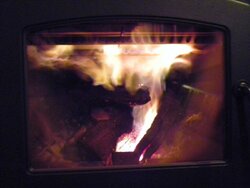Seasoned Oak
Minister of Fire
The stove works fine.Its usually the operator that is malfunctioning when problems occur. Nothin cheap about this stove except the price. Its got to be one of the best value for the dollar out there. I paid $1.58 a pound for both of mine. Cant even get good hamburger for that price.Good eye teach. I missed that bit of misinformation. Mass production can actually improve quality. Englander has done a great job at producing a quality affordable stove.

Last edited:






 really?
really?